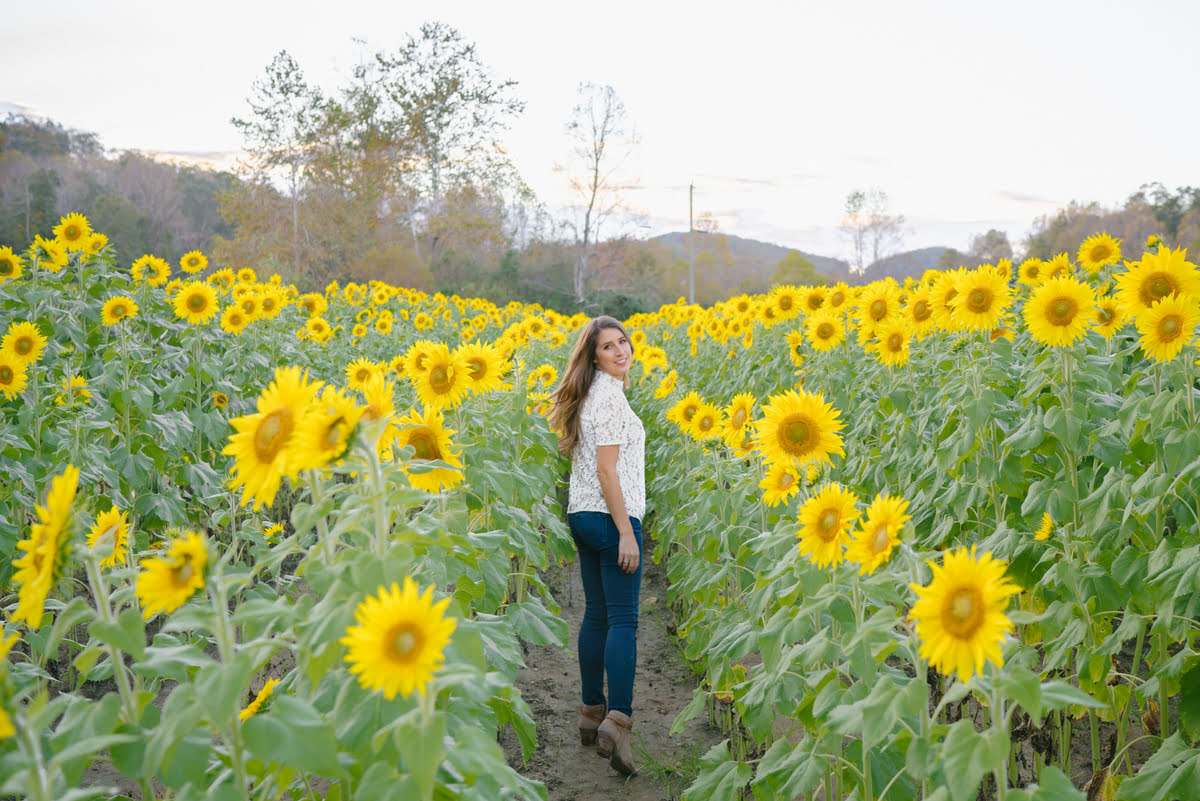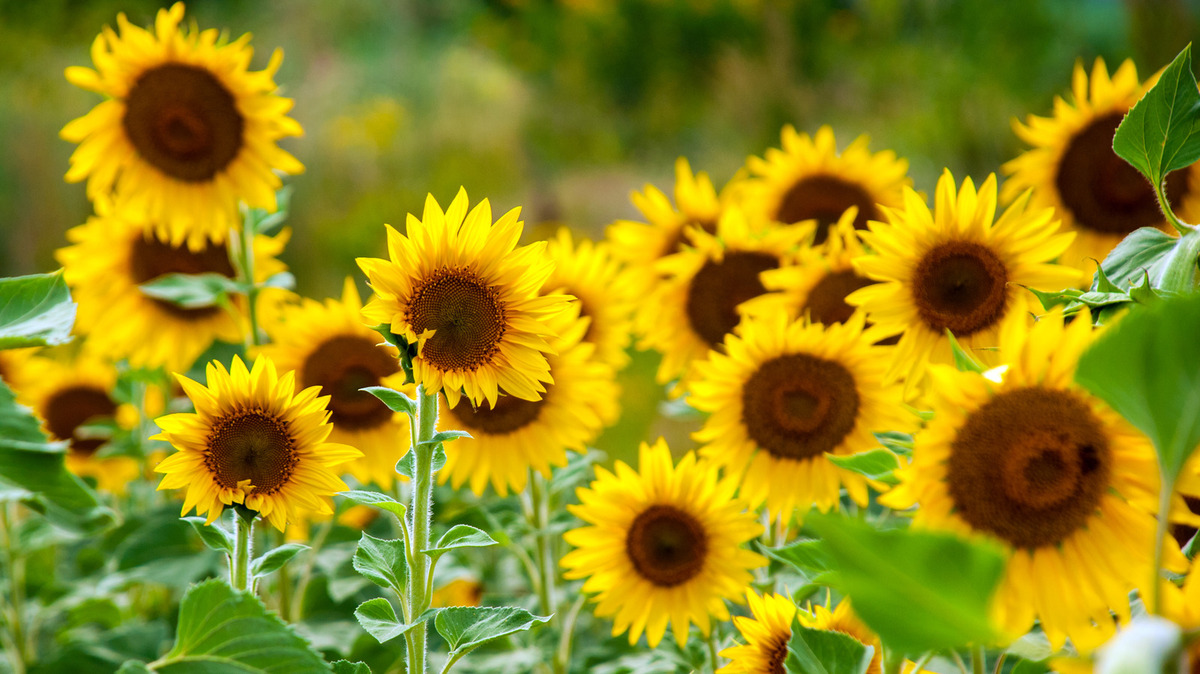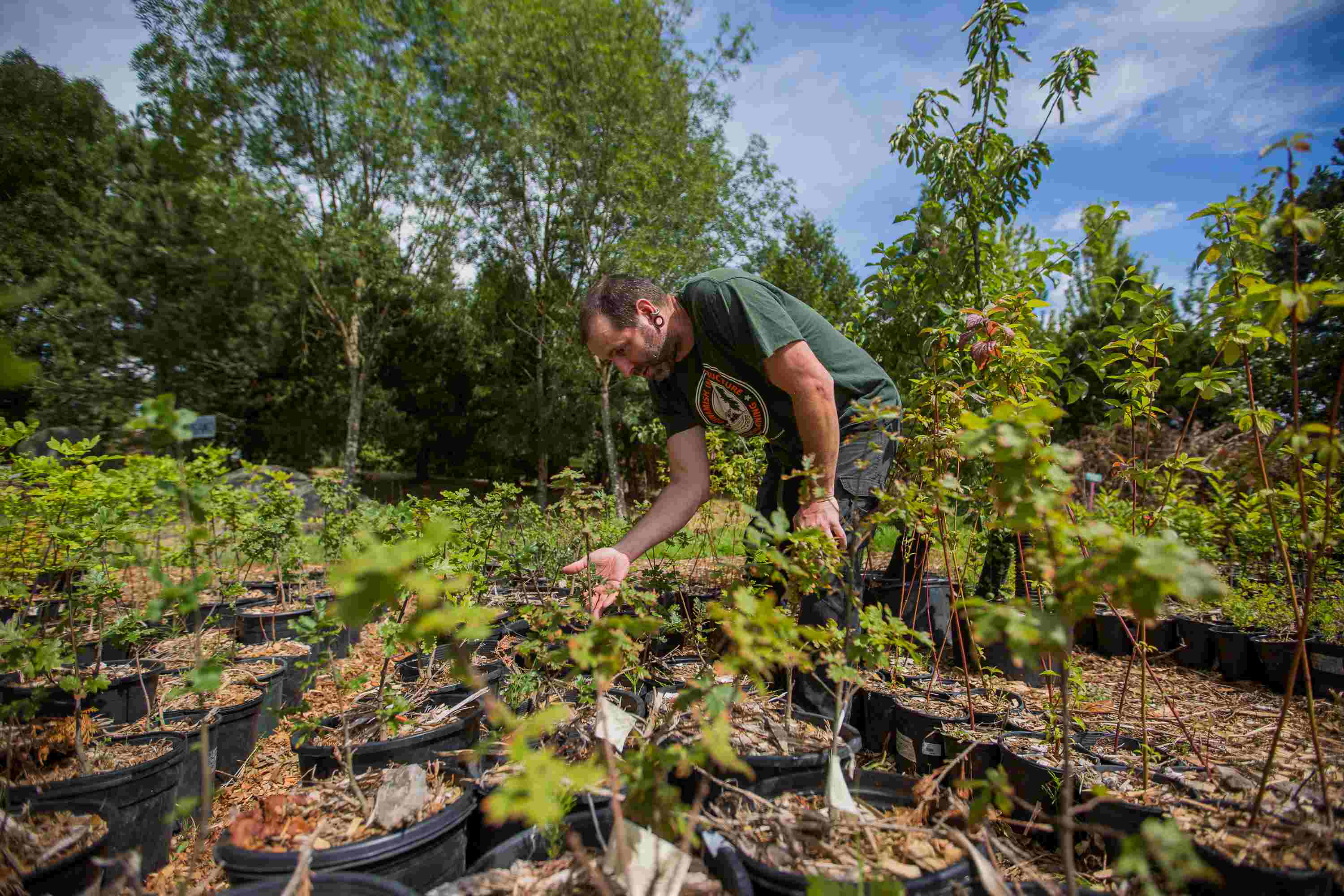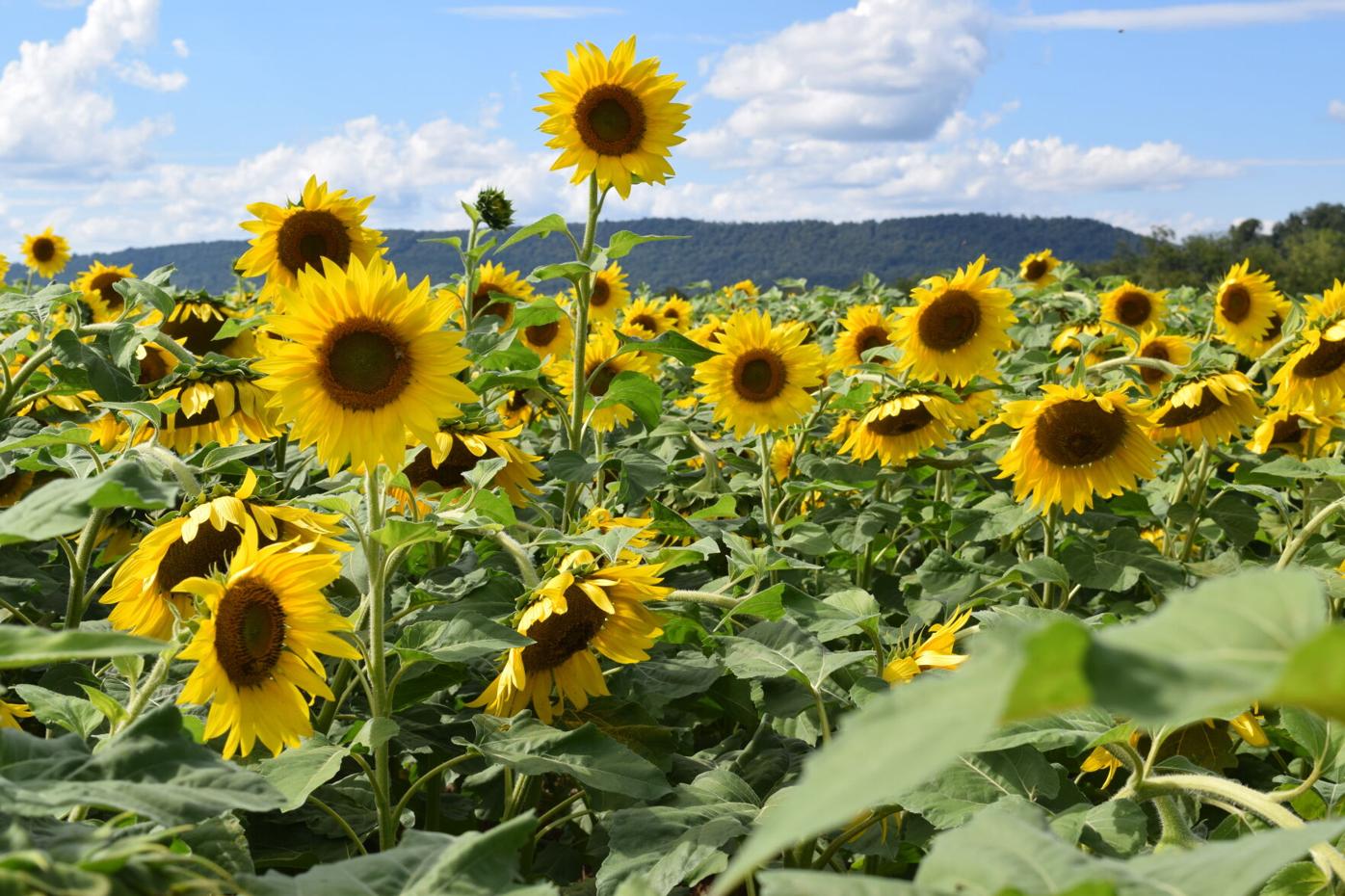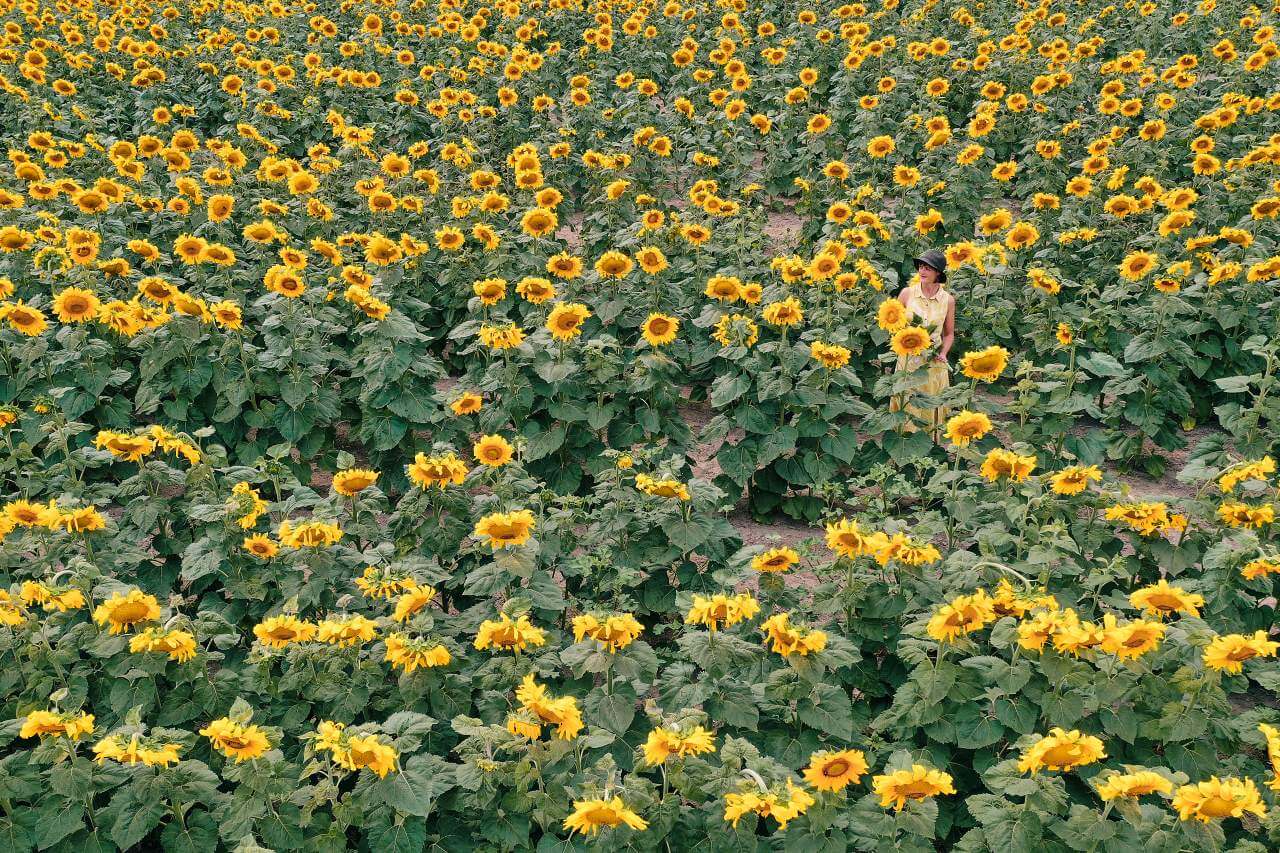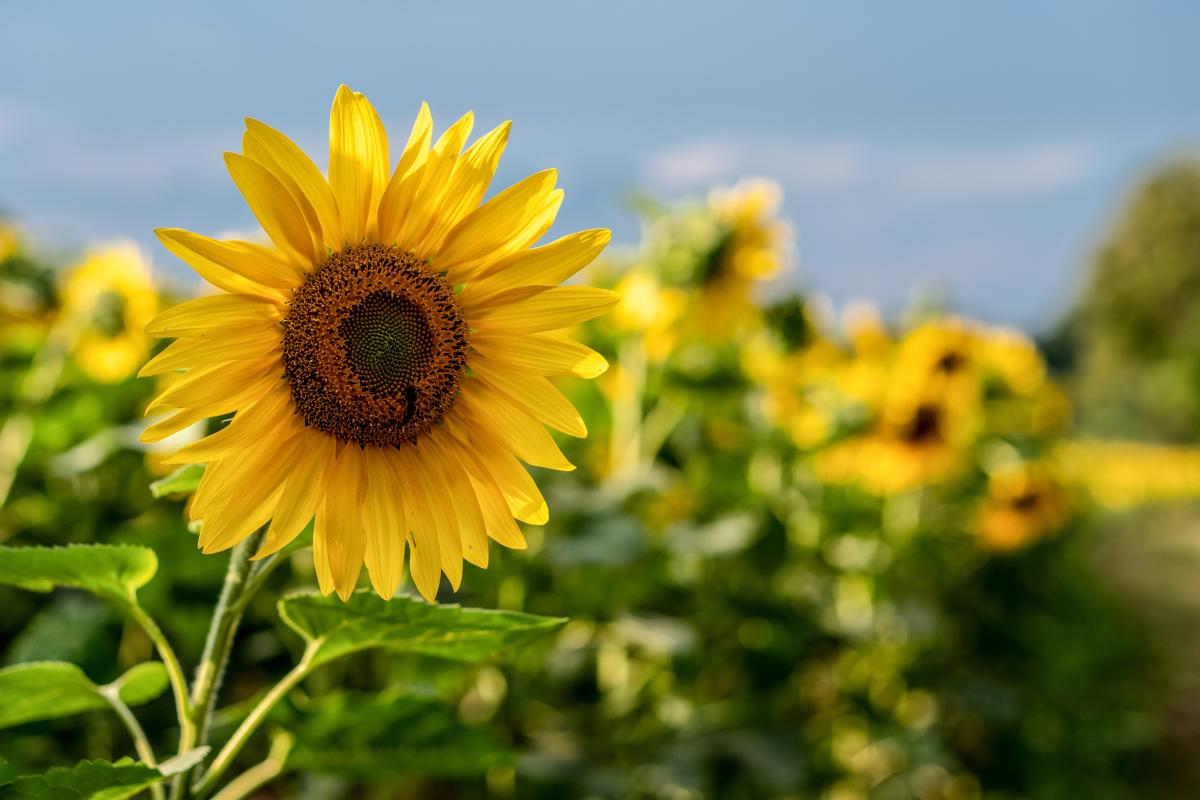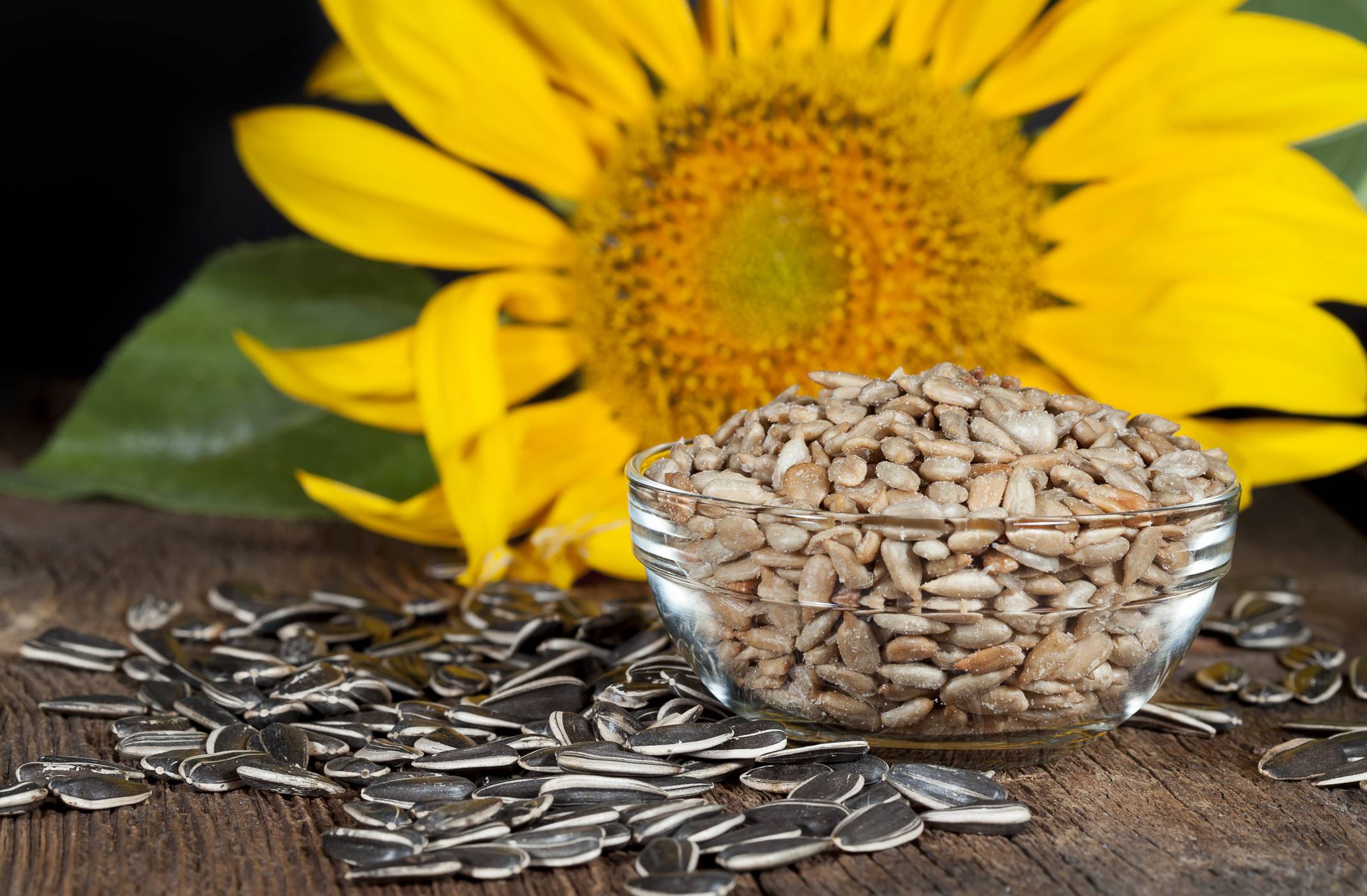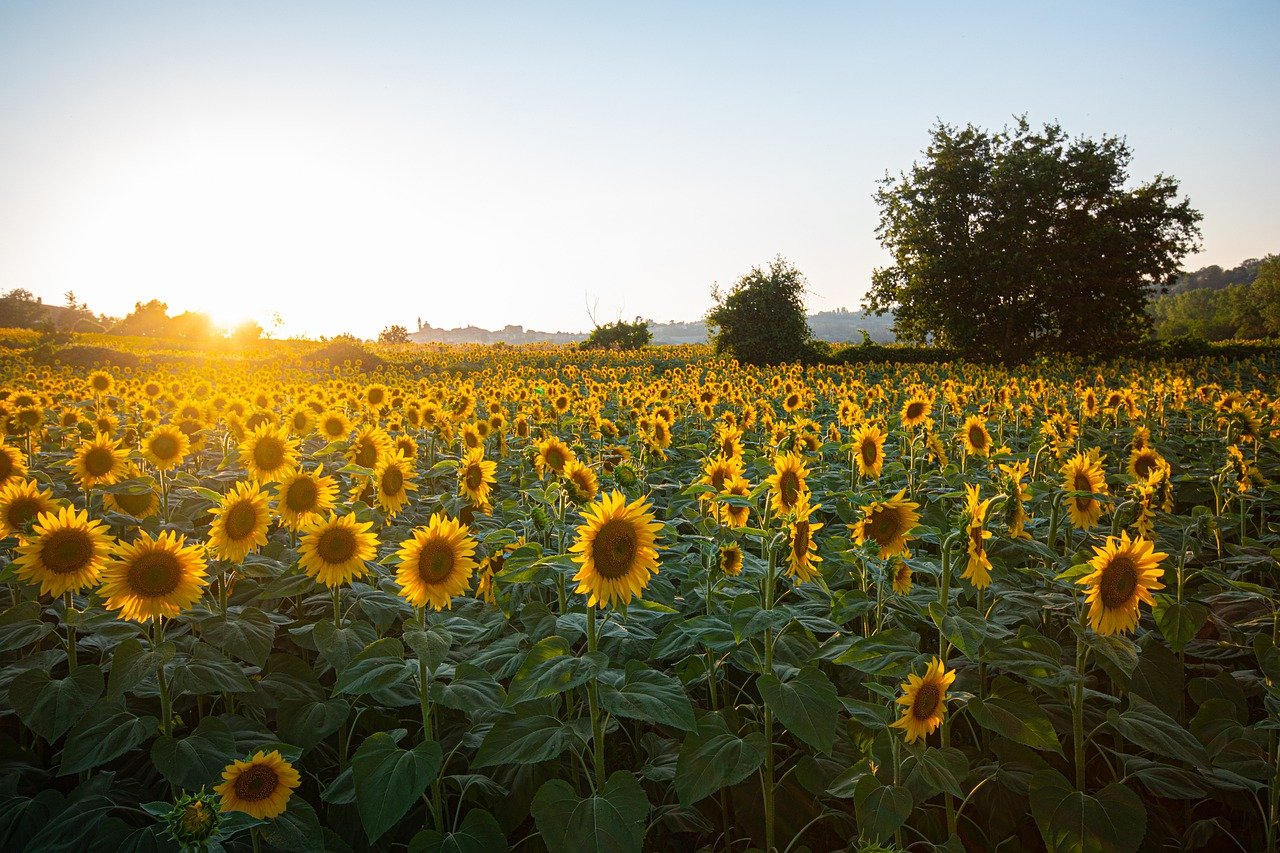Home>Types of Gardening>Ornamental Gardening>When To Plant Sunflowers In Seattle
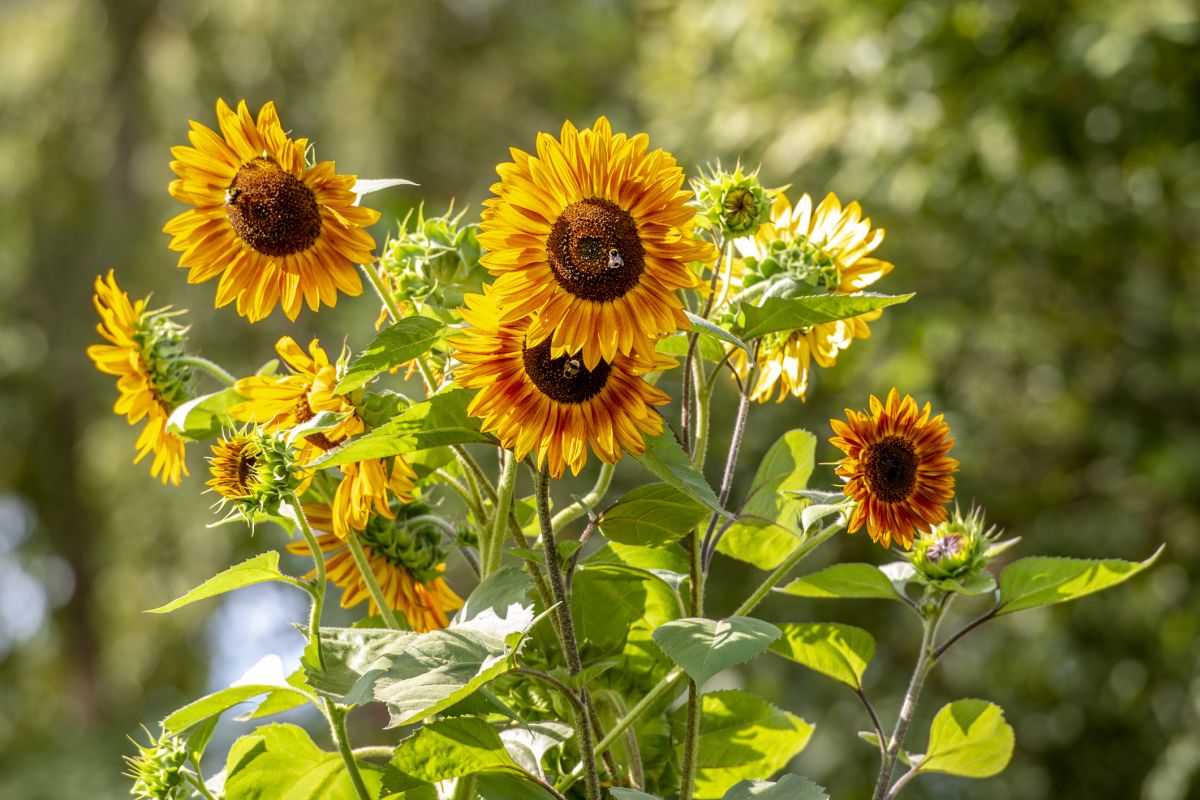

Ornamental Gardening
When To Plant Sunflowers In Seattle
Modified: January 22, 2024
Learn when to plant sunflowers in Seattle for your ornamental gardening needs. Get expert tips and advice for successful sunflower cultivation in the Pacific Northwest climate.
(Many of the links in this article redirect to a specific reviewed product. Your purchase of these products through affiliate links helps to generate commission for Chicagolandgardening.com, at no extra cost. Learn more)
Table of Contents
- Introduction
- Factors to Consider before Planting Sunflowers
- Sunflower Varieties Suitable for Seattle
- Best Time of Year to Plant Sunflowers in Seattle
- Steps to Planting Sunflowers in Seattle
- Sunflower Care and Maintenance Tips for Seattle Gardeners
- Common Problems and Solutions for Growing Sunflowers in Seattle
- Harvesting Sunflowers in Seattle
- Conclusion
Introduction
Welcome to the world of ornamental gardening, where beauty blooms and landscapes come alive with vibrant colors and delicate scents. If you’re a gardening enthusiast in the picturesque city of Seattle, you’re in for a treat. Seattle’s moderate climate and ample rainfall provide the perfect conditions for a variety of plant species to thrive, including the majestic sunflower.
Sunflowers, with their striking yellow petals and towering stalks, are a popular choice for ornamental gardening. Not only do they add a touch of sunshine to any garden, but they also attract bees, birds, and other pollinators, contributing to a healthy ecosystem. Whether you have a small urban plot, a balcony, or a spacious backyard, growing sunflowers can bring joy and beauty to your outdoor space.
In this article, we will explore the factors to consider before planting sunflowers, the best sunflower varieties for Seattle, the ideal time for planting, step-by-step instructions for planting, and essential care and maintenance tips to help your sunflowers thrive. We will also discuss common problems faced by Seattle gardeners and provide solutions to ensure a successful sunflower growing experience.
So, whether you’re a beginner or a seasoned gardener, grab your gardening gloves and let’s dig deep into the wonderful world of sunflowers in Seattle!
Factors to Consider before Planting Sunflowers
Before diving into the world of sunflower gardening, there are a few factors to consider to ensure a successful growing experience:
- Climate: Seattle’s mild, maritime climate is generally favorable for sunflowers. However, it’s important to note that they prefer warm, sunny conditions. Choose a location in your garden that receives at least six to eight hours of direct sunlight each day.
- Soil Quality: Sunflowers thrive in well-draining soil that is rich in organic matter. Before planting, prepare the soil by adding compost or aged manure to improve its fertility. It’s also recommended to perform a soil test to determine its pH level and make any necessary adjustments.
- Spacing: Sunflowers are known for their towering height, so make sure to provide them with ample space to grow. Plant the seeds at least two feet apart to allow for proper root development and reduce competition for nutrients and water.
- Support: Depending on the variety, sunflowers may require support to prevent them from toppling over. Consider installing stakes or a trellis system to provide stability as they grow taller.
- Watering: While Seattle is known for its rainfall, proper watering is still crucial. Sunflowers require regular watering, especially during hot and dry periods. Water deeply, allowing the soil to soak up the moisture, but avoid overwatering, as it can lead to root rot.
- Pests and Diseases: Sunflowers are generally resilient to pests and diseases, but it’s important to keep an eye out for common garden pests like aphids and slugs. Monitor your plants regularly and take appropriate measures if infestations occur, such as using insecticidal soap or organic pest control methods.
By considering these factors before planting, you can create an optimal environment for your sunflowers to grow and flourish. With proper care and attention, you’ll be rewarded with a stunning display of vibrant blooms in your Seattle garden.
Sunflower Varieties Suitable for Seattle
When it comes to selecting sunflower varieties for your Seattle garden, there are numerous options to choose from. Here are a few varieties that are well-suited to the climate and growing conditions in Seattle:
- Giant Sunflowers: If you want to create a dramatic impact in your garden, consider planting giant sunflowers. Varieties such as ‘American Giant’ and ‘Sunzilla’ can reach impressive heights of up to 12 feet or more, with oversized flower heads that can span over a foot in diameter.
- Dwarf Sunflowers: For smaller gardens or containers, dwarf sunflower varieties are an excellent choice. These compact plants grow to around 1 to 3 feet tall and produce smaller flower heads. Look for varieties like ‘Sundance Kid’ and ‘Teddy Bear’ for a delightful display of cheerful blooms.
- Multi-Branching Sunflowers: If you’re looking to maximize flower production, consider multi-branching sunflower varieties. These plants have multiple stems, resulting in more blooms per plant. Varieties like ‘ProCut’ and ‘Sunbright’ are prolific bloomers and are often used for cut flower arrangements.
- Tall Sunflowers: If you want sunflowers that are tall but not quite as towering as the giant varieties, there are plenty of intermediate-sized options available. Varieties like ‘Skyscraper’ and ‘Kong’ grow to around 6 to 8 feet tall, making them an ideal choice for adding vertical interest to your garden.
- Colorful Sunflowers: While the classic yellow sunflower is undeniably stunning, there are also varieties available in an array of eye-catching colors. Look for varieties such as ‘Autumn Beauty’ and ‘Strawberry Blonde’ for a mix of vibrant reds, oranges, and burgundy hues to add a pop of color to your garden.
These are just a few examples of the many sunflower varieties that can thrive in Seattle’s climate. Consider your space, preferences, and the overall aesthetic you want to achieve in your garden when selecting the perfect sunflower varieties for your Seattle home.
Best Time of Year to Plant Sunflowers in Seattle
Timing is essential when it comes to planting sunflowers in Seattle. Sunflowers are warm-season annuals, so it’s important to wait until the danger of frost has passed before planting them in your garden. The best time to plant sunflowers in Seattle is typically in late spring or early summer when the soil has warmed up and temperatures consistently stay above freezing.
In Seattle, the average last frost date is around mid-April to early May, but it can vary depending on the specific location within the city. To be safe, it’s recommended to wait until late May or early June to plant sunflowers outdoors. By this time, the soil will have heated up, and the weather will be more favorable for sunflower growth.
Before planting, prepare the soil by removing any weeds and loosening it with a garden fork or tiller. Add compost or well-rotted manure to improve the soil’s fertility and drainage. Sunflowers prefer well-draining soil, so if your garden tends to have heavy clay soil, consider amending it with sand or organic matter to improve drainage.
When planting, sow the sunflower seeds directly into the soil, as they have long taproots and can be sensitive to transplanting. Plant the seeds about 1 to 2 inches deep and cover them with soil. Space them according to the variety’s recommended spacing guidelines.
As the summer progresses, monitor the weather and water your sunflowers regularly to ensure they receive adequate moisture. Deep watering once a week is typically sufficient, but adjust the frequency depending on the weather conditions. Be sure to water at the base of the plants to avoid wetting the leaves, which can lead to fungal diseases.
By planting sunflowers at the right time and providing the necessary care, you can expect to see your sunflowers in full bloom and brightening up your Seattle garden by mid-summer.
Steps to Planting Sunflowers in Seattle
Planting sunflowers in your Seattle garden is a straightforward process. Follow these step-by-step instructions to ensure successful growth and a bountiful harvest of sunflowers:
- Choose the Right Location: Select a sunny spot in your garden that receives at least six to eight hours of direct sunlight each day. Sunflowers thrive in full sun, so avoid shaded areas.
- Prepare the Soil: Clear the area of any weeds or debris. Loosen the soil with a garden fork or tiller to a depth of about 12 inches. Add compost or well-rotted manure to improve soil fertility and drainage.
- Decide on the Sunflower Variety: Choose the sunflower varieties that suit your taste and garden space. Consider factors like height, bloom size, and color to create the desired visual impact.
- Sowing the Seeds: Plant the sunflower seeds directly into the soil. Dig a hole that is about 1 to 2 inches deep. Space the seeds according to the recommended guidelines for the chosen variety. Cover the seeds with soil and gently pat it down.
- Watering: After planting, water the soil thoroughly to ensure proper seed germination. Keep the soil evenly moist but not overly saturated. Avoid overwatering, as it can cause seed rot or fungal diseases.
- Provide Support (If Needed): If you’re growing tall or multi-stemmed varieties, consider placing stakes or installing a trellis system for support. This will prevent the plants from toppling over as they grow taller.
- Monitor and Maintain: Keep an eye on your sunflowers as they grow. Water the plants regularly, especially during dry periods. Apply mulch around the base of the plants to conserve moisture and suppress weed growth. Remove any weeds that may compete with the sunflowers for nutrients.
- Protect from Pests and Diseases: Monitor your sunflowers for common pests like aphids or slugs. Use organic pest control methods or insecticidal soap if necessary. Inspect the leaves for any signs of diseases like powdery mildew, and take appropriate measures to prevent the spread.
- Enjoy the Blooms: As the sunflowers grow, you will be rewarded with their beautiful and vibrant blooms. Once the flower heads start to dry and turn brown, it’s time to harvest the seeds for consumption or using them as bird feed.
By following these steps and giving your sunflowers the care they need, you can enjoy a stunning display of these cheerful flowers in your Seattle garden.
Sunflower Care and Maintenance Tips for Seattle Gardeners
Once your sunflowers are planted and growing, it’s important to provide them with proper care and maintenance to ensure healthy growth and abundant blooms. Here are some essential care tips for sunflowers in Seattle:
- Watering: Sunflowers have deep root systems, so it’s important to water them deeply and less frequently. Water the plants at the base, taking care not to wet the leaves. Aim for about an inch of water per week, adjusting depending on rainfall and weather conditions.
- Mulching: Apply a layer of organic mulch, such as straw or wood chips, around the base of the sunflowers. Mulch helps to conserve moisture, suppress weed growth, and regulate soil temperature.
- Staking: Tall sunflower varieties or multi-stemmed sunflowers may require staking for support. Install stakes or a trellis system early in the plant’s growth to prevent them from bending or toppling over during wind or heavy rain.
- Fertilizing: Sunflowers are generally low-maintenance and don’t require excessive fertilization. However, you can apply a balanced organic fertilizer during the early stages of growth if your soil needs a nutrient boost.
- Deadheading: To encourage continuous blooming and prevent the plant from putting energy into seed production, consider deadheading spent flowers. Snip off the flower heads once they start to fade or as soon as the petals drop.
- Harvesting Seeds: If you’re growing sunflowers for their seeds, allow the flower heads to fully mature and dry on the stalk. Once the petals have fallen and the back of the flower head turns yellow or brown, cut the flower heads and hang them upside down in a cool, dry place. Once dry, rub the flower heads to release the seeds.
- Pest and Disease Control: Monitor your sunflowers for common garden pests such as aphids, slugs, and snails. Remove any pests by hand or use organic pest control methods. Keep an eye out for signs of diseases like powdery mildew and take appropriate action to prevent its spread.
- Support for Heavy Flower Heads: Some sunflower varieties have particularly large and heavy flower heads. To prevent them from drooping or breaking under their weight, you can provide additional support by tying them gently to stakes or using plant ties.
- Enjoy the Beauty: Finally, take the time to appreciate the beauty and splendor of your sunflowers. Whether you’re using them as decorative additions to your garden or harvesting their seeds, sunflowers bring joy and vibrancy to any Seattle gardener’s space.
By following these care and maintenance tips, you can enjoy healthy and thriving sunflowers in your Seattle garden throughout the growing season.
Common Problems and Solutions for Growing Sunflowers in Seattle
While sunflowers are generally resilient plants, they can still encounter a few common problems during the growing season. Here are some issues you may face when growing sunflowers in Seattle and the solutions to overcome them:
- Pests: Sunflowers can attract pests like aphids, slugs, and snails. To control aphids, spray plants with a strong blast of water or use insecticidal soap. For slugs and snails, manually remove them from the plants or use organic slug control methods.
- Downy Mildew: Downy mildew is a fungal disease that can affect sunflowers, causing yellow spots on the leaves, stunted growth, and premature leaf drop. To prevent downy mildew, ensure proper spacing between plants for good air circulation and avoid overhead watering.
- Powdery Mildew: Powdery mildew appears as a white powdery coating on the leaves, stems, and flower heads of sunflowers. To prevent powdery mildew, ensure good air circulation, avoid overhead watering, and treat with an organic fungicide if necessary.
- Bird Damage: Birds may be attracted to sunflower seeds, causing damage to the flowers and potential loss of seeds. To protect your sunflower heads from birds, cover them with fine netting or place scare devices near the plants.
- Deer and Squirrel Damage: Deer and squirrels may be tempted to snack on sunflower plants. Install proper fencing or use deterrents to prevent these animals from accessing your garden and damaging your sunflowers.
- Stem Rot: Stem rot can occur when the base of the sunflower plant is exposed to excessive moisture. Improve drainage and avoid overwatering to prevent stem rot. If stem rot occurs, remove the affected plants and ensure proper soil drying before replanting.
- Weed Competition: Weeds can compete with sunflowers for nutrients, water, and sunlight. Regularly weed around your sunflower plants to minimize competition and prevent weed seeds from taking root.
- Extreme Weather Conditions: Seattle’s weather can be unpredictable, with occasional heatwaves or heavy rain. Protect young sunflower plants from extreme heat by providing shade cloth or planting them in an area with partial shade. Stake tall sunflowers securely to prevent damage from strong winds.
- Non-Flowering: If your sunflowers are not producing blooms, it could be due to various reasons, such as insufficient sunlight, improper spacing, or nutrient deficiencies. Ensure your sunflowers receive adequate sunlight and nutrients, and follow proper planting guidelines for spacing.
By recognizing and addressing these common problems promptly, you can ensure the healthy growth and success of your sunflowers in your Seattle garden. Enjoy the beauty of these sunny blooms and the satisfaction of a thriving garden!
Harvesting Sunflowers in Seattle
Harvesting sunflowers in Seattle is an exciting and rewarding part of growing these beautiful plants. Sunflowers can provide both decorative blooms for your home and a tasty snack in the form of their seeds. Here are the steps to properly harvest sunflowers:
- Observing Maturity: Sunflowers are ready to harvest when the back of the flower heads turn yellow or brown, and the petals have fallen off. The seeds inside the flower head should be plump and firm.
- Timing: Harvesting sunflowers should be done on a dry and sunny day to ensure that the seeds are fully mature and dry. It’s best to harvest in the morning when the flower heads are dry and before any dew has settled.
- Cutting the Stalks: Use sharp garden shears or a knife to cut the sunflower stalks about six inches below the flower head. This will allow for easy handling and drying.
- Drying the Flower Heads: Hang the flower heads upside down in a well-ventilated and dry area, such as a shed or a covered porch. Make sure there is enough space between the flower heads to prevent them from touching or overlapping. Allow them to dry for two to three weeks until the seeds are fully mature.
- Removing the Seeds: Once the flower heads are dry, gently rub or tap them to release the seeds. You can do this over a clean container or a large bowl to catch the seeds. Separate the seeds from any remaining plant material or chaff.
- Storing the Seeds: Store the harvested sunflower seeds in a cool, dry, and airtight container. Make sure the seeds are completely dry before sealing the container to prevent moisture and mold development. Label the container with the date and variety of sunflower seeds for easy reference.
- Using the Seeds: Sunflower seeds can be enjoyed as a tasty and nutritious snack, added to salads, or used in baking. You can also save some seeds as bird feed or use them for future planting.
Harvested sunflower seeds can be stored for several months if properly dried and kept in suitable conditions. Remember to discard any seeds that appear moldy, discolored, or shriveled.
By following these guidelines, you can harvest and enjoy the delicious and versatile seeds from your sunflowers while also saving some for future gardening endeavors.
Conclusion
Congratulations! You are now equipped with the knowledge and tips needed to successfully grow and harvest sunflowers in your Seattle garden. By considering factors such as climate, soil quality, and spacing, you can create an optimal environment for your sunflowers to thrive. Remember to choose the right sunflower varieties suitable for Seattle’s climate, and plant them at the appropriate time of year when the soil is warm and frost is no longer a threat.
Once planted, provide your sunflowers with proper care and maintenance, including regular watering, mulching, and potential support for taller varieties. Monitor for common problems such as pests, diseases, and extreme weather conditions, and take swift action when necessary to protect and preserve the health of your sunflowers.
When the time comes, enjoy the process of harvesting your sunflowers, whether it’s for their decorative appeal or their delicious and nutritious seeds. Remember to allow the flower heads to fully mature and dry before extracting the seeds, and store them properly to maintain their freshness and quality.
Gardening is a journey, and growing sunflowers adds a touch of beauty and joy to any Seattle garden. So, seize the opportunity to create a vibrant and colorful oasis in your outdoor space with these magnificent blooms. Get your hands dirty, embrace the sunflower magic, and relish in the rewards of your hard work and dedication.
Happy gardening, Seattle sunflower enthusiasts!
